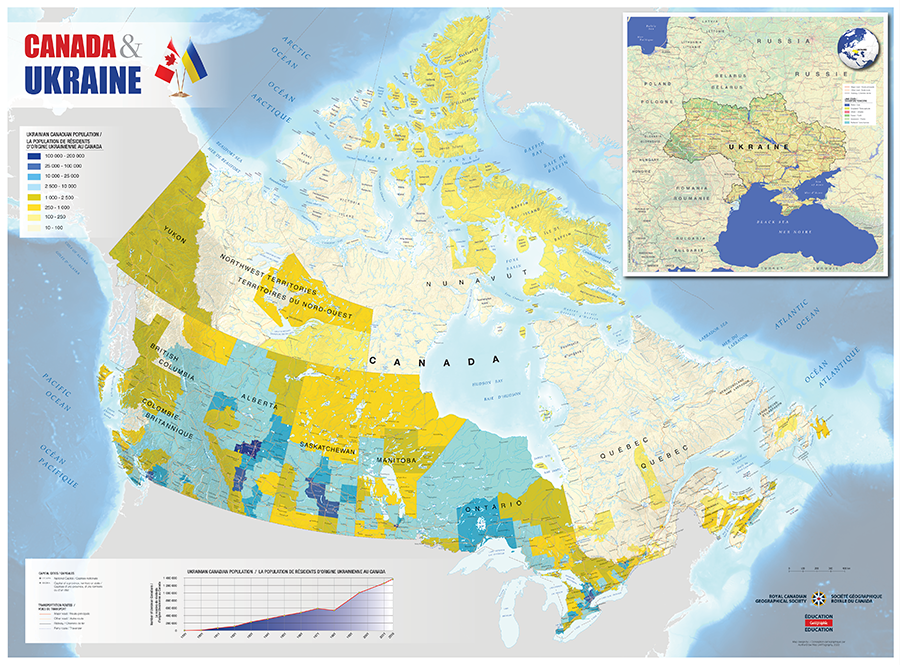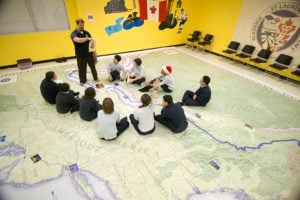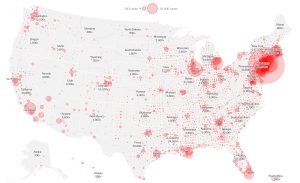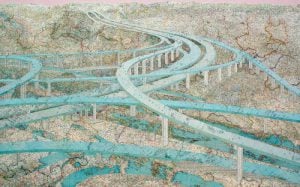It was Maharaj who initially suggested that the RCGS create a map to demonstrate that the Society and Canadians stand with Ukraine. Through his work with GOPAC, Maharaj witnessed firsthand Ukraine’s attempts to rebuild and strengthen its democratic institutions in the wake of the 2014 Maidan Revolution that ousted President Viktor Yanukovich.
“I think one of the reasons Ukrainians have been so astonishingly successful at holding back the invasion is because they are fighting for their home,” he says. “The fact that there are so many people in Canada for whom Canada is their home, but to whom home in Ukraine also calls, carries meaning.”
Another striking feature of the map is that Canada and Ukraine are shown at the same scale. The size of Ukraine in relation to Canada surprised Canadian Geographic Education Special Projects Editor Tanya Kirnishni, who was born in Ukraine and immigrated to Canada with her parents at the age of seven.
Kirnishni has created a lesson plan for educators to use alongside the map, centering the immigrant experience and examining “push” and “pull” factors that might motivate someone to leave their country of origin and seek a new life elsewhere. The lesson plan was informed by her own family’s experience, she says.
“When my parents graduated university, the future they had been planning no longer existed. The Soviet Union fell apart, and all their plans and expectations for the future became much more complicated.”
For Kirnishni, the opportunity to work on the map and lesson plan was a meaningful way to explore the connections between the country of her birth and the one she now calls home, and to show support for relatives and friends in Ukraine.
“I’m hoping Canadians will see this map as an example of one group of people that are just one thread in the tapestry of multiculturalism,” she says. “We are a nation of immigrants, and although we’ve come to call Canada home, I think that part of our hearts are still in other places.”
A tiled, printable version of the map and the accompanying lesson plan are available for free download on the Canadian Geographic Education website.
“Like most Canadians, we are horrified by this tragic war, while at the same time in awe of the bravery of the Ukrainian people fighting for their freedom and their country,” says Geiger. “We asked ourselves how we could help. Well, we are a geographical society, so we could produce a map, and we are an educational charity, so we could write lesson plans. Canadian individuals, organizations, and businesses all need to support Ukraine in any way they can.”






